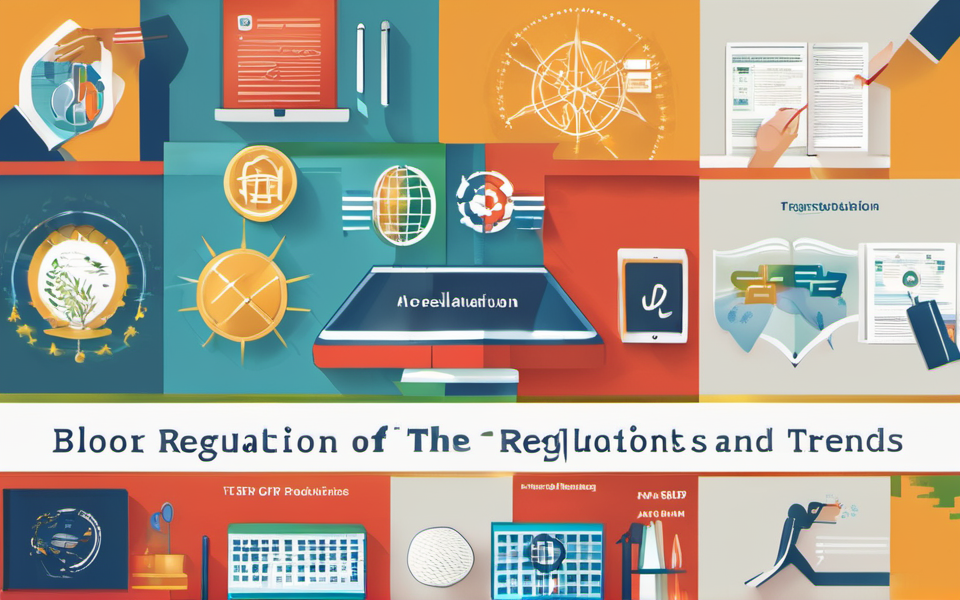Imagine a world where every financial transaction, every product purchase, and every data exchange is perfectly monitored and governed by smart regulations. Sounds like a sci-fi movie? It’s closer than you think!
The future of regulation isn’t just about boring rules and paperwork. It’s about harnessing technology and data to create smarter, more efficient, and future-proof regulatory environments.
Embracing Technology: Regulatory Tech Takes Center Stage
Gone are the days of paper-heavy regulations and endless manual processes. The regulatory landscape is undergoing a digital revolution, led by RegTech and its close companion, SupTech (supervisory technology).
The Rise of RegTech and SupTech
RegTech uses technology to automate, streamline, and simplify compliance tasks, freeing up regulators and businesses to focus on strategic initiatives. It’s like having a super-smart AI assistant that knows every rule, every guideline, and every compliance requirement inside out.
But RegTech is about more than just automation. It’s about:
- Increased Transparency: Imagine instant access to all relevant regulations and their updates in a centralized digital platform. That’s the power of RegTech!
- Improved Efficiency: Manual data entry and tedious paperwork are a thing of the past. RegTech automates processes and saves valuable time and resources for everyone.
- Enhanced Compliance: RegTech uses AI and machine learning to identify potential risks and inconsistencies in real-time, enabling organizations to proactively manage compliance.
SupTech, on the other hand, equips regulators with cutting-edge technology for data analytics, risk management, and supervisory oversight. It’s like giving regulatory agencies a powerful microscope to spot trends, anomalies, and potential threats within financial markets.
Think about these real-world benefits of SupTech:
- Predictive Analytics: By analyzing vast amounts of data, SupTech can identify emerging risks and predict market instability before it even occurs.
- Fraud Detection: Smart algorithms can instantly spot fraudulent activities, enabling regulators to intervene before significant damage occurs.
- Real-time Monitoring: SupTech allows regulators to monitor markets in real-time, offering a holistic view of potential risks and regulatory breaches.
Emerging Trends: Shaping the Future of Regulation
The world of regulation is dynamic, and several exciting trends are reshaping the landscape as we speak.
The Move Toward Principle-Based Regulation
Traditional rule-based regulations often fail to keep up with the ever-evolving pace of innovation. That’s where principle-based regulation comes in. Instead of prescriptive rules, principle-based regulation emphasizes outcomes and provides flexibility for companies to adopt the most effective approach to meet those objectives.
Think of it as moving from a strict blueprint to a set of guiding principles:
- Adaptability: Principle-based regulations can adapt to the ever-changing technological landscape, ensuring regulations remain relevant and effective.
- Innovation-Friendly: Companies are empowered to explore innovative solutions while still complying with overarching principles.
- Greater Flexibility: Regulation becomes more flexible, allowing businesses to apply principles to their specific context and business models.
AI & Machine Learning: Revolutionizing Compliance
Artificial intelligence and machine learning are transforming the world of regulatory compliance. Imagine AI-powered assistants helping businesses navigate complex regulations or even predicting regulatory changes before they happen.
Here are a few ways AI and ML are already changing the regulatory game:
- Automated Compliance Audits: AI algorithms can automate compliance audits, ensuring accuracy and efficiency, and saving businesses significant time and resources.
- Predictive Risk Assessment: ML models can analyze massive data sets to identify potential risks, helping organizations proactively mitigate compliance issues before they occur.
- Personalized Regulatory Guidance: AI can deliver personalized regulatory guidance based on a company’s specific industry, size, and risk profile, making compliance easier than ever.
Distributed Ledger Technology: Enabling Transparency and Traceability
Distributed ledger technology, often known as blockchain, is rapidly gaining momentum in the financial sector.
Imagine a world where every transaction is transparent and auditable on a shared, immutable ledger:
- Transparency and Trust: Blockchain fosters trust and transparency by providing an auditable and secure record of all transactions.
- Data Security: The decentralized nature of blockchain makes it highly resistant to tampering and hacking, ensuring data integrity and security.
- Improved Efficiency: Smart contracts automated certain processes and eliminated the need for intermediaries, streamlining transactions and reducing costs.
Navigating the Regulatory Future
The regulatory landscape is rapidly changing. Staying informed and adapting is essential for businesses and regulators alike.
Here are some key takeaways:
- Embrace technology: RegTech and SupTech will drive regulatory efficiency and effectiveness.
- Learn the trends: Stay informed about emerging trends like principle-based regulation, AI, and blockchain.
- Stay flexible and agile: Be prepared to adapt to changing regulations and adopt innovative solutions to meet evolving compliance demands.
The future of regulation is a blend of technology, innovation, and collaboration. By understanding the key trends and embracing the power of emerging technologies, we can create a more transparent, efficient, and future-proof regulatory environment. Let’s start building a better future together, one regulation at a time.




